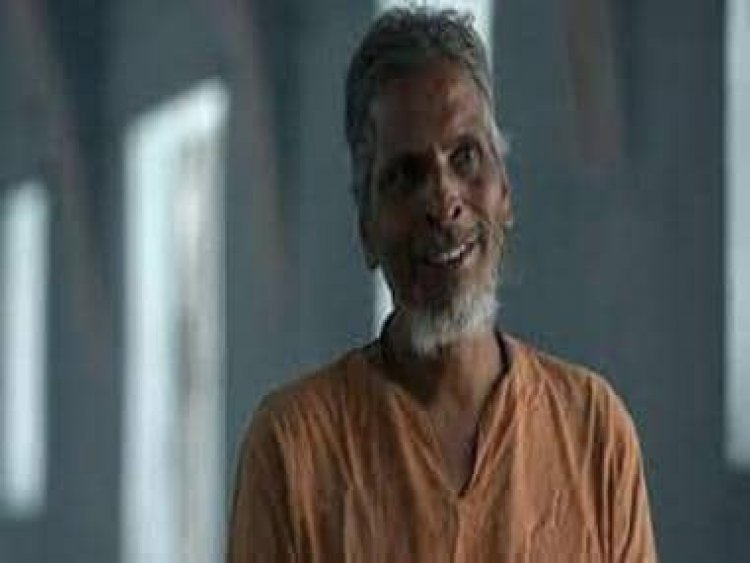Indian Predator Diary of a Serial Killer review: Laboured documentary punches below its weight
Indian Predator Diary of a Serial Killer review: Laboured documentary punches below its weight

In a sequence from Netflix’s Indian Predator: Diary of a Serial Killer a psychological expert explains “I have a natural resistance towards killing someone as do you.” It’s the kind of statement you would probably never hear in your life, nor worded as potently as the doctor does. Does killing actually require resistance as a way to establish normalcy? It’s an absurd, but deeply troubling thought. We imagine crime as the perseverance to do something outlandish, or desperate, but what if its habit. What if you’re a murderer until you actually stop living it as routine. In the second instalment of the Netflix documentary series that has quickly followed the heels of The Butcher of Delhi, this new documentary has gory, graphic details, a stirring exclusive interview, but unfortunately, nothing in sense of narrative tightness.
The documentary begins with events in 2000. Dhirendra Singh, a journalist based out of Prayagraj (formerly Allahabad) goes missing. His body is subsequently found, mutilated, the head separate from the body. An investigation into the brutal murder ensues, and it is quickly resolved with the unlikely assistance of phone-tracking (still a new-age technology in those early years). A man named Raja Kolander places a call from the deceased journalist’s home. The documentary doesn’t waste time telling us, Kolander is the man the police had been looking for. What follows is less a twisty exploration of a murky case and more a thesis on the probabilities surrounding Kolander’s existence, and more specifically his humanity.
Central to the documentary’s narrative that stretches over three episodes, is Kolander’s diary, apparently a kill-list of names he maintained. Kolander’s other crimes are discovered not because they are being investigated but because of the diary that reads and feels like a clarion call for meting out swift, immodest justice. The diary doesn’t really extrapolate, to a great extent the accusations levelled at Kolander. Hairy, discomforting details begin to emerge about the man’s past, also linking him with a double murder involving a Sumo car. It is alleged that Kolander did not just murder people, but ate them, cooked their brains and gorged on their intestines. It’s sensational, edge-of-the-seat stuff but in principle but it rarely plays out the same.
There is a lot of huffing and puffing, in a narrative that from the get-go, feels like it is stretching itself thin. For documentary format to really grab your attention there has to be a fair amount of hide-and-seek, the instinctual pretence of direction before the misdirection. In this documentary, there is none of that. The documentary is teased as a contradictory argument between differing opinions about a famed murderer and yet it falls far short of convincing us that good might exist, where evil so obviously does. Then there is the immediacy of resolution, the fact the narrative want, to swiftly move into the troubling psychology of this alleged serial killer, that it forgets to deal with the basic twisted nature of an investigation.
Sure, the resolution here is painfully simple, and you can sense the makers struggling to inject mystery into a case that seems to have unravelled on its own. But the more than the gory details of allegations that have been unproven, the narrative could have maybe also underlined the dogged police work behind the catching of a criminal. His diary, which happened to be discovered is also treated as an intriguing segue rather than a shocking discovery that fails to convince, despite some oddly plain CGI animations. The thing about serial killers is that they remain elusive despite close analysis and here a fair amount of time is expended exploring Kolander’s god(read king) complex. But you can sense the material running thin when this idea is repeated at least three times.
What works for The Diary of A Serial Killer, is its desire to venture into the politics of caste and tribals, even if to unconvincing lengths. Experts reason that Kolander’s psyche is a socio-political state rather than a physical one. He desires to rule as a mode of rebellion against the deprivation of his class and caste. It’s a fascinating theory but it amounts to little other than pejorative criminalisation. It can’t really be proven one way or the other. But none of the documentary’s wary, thin material compares to its single-most cardinal sin – the waste of an exclusive interaction with the man himself.
It’s incredible that a documentary about Kolander, that also manages to get him on camera (still serving his sentence) doesn’t want him to be the last face we remember, his words to be the last ones we hear. Kolander is twitchy, oddly comfortable and in denial and yet hardly as fascinating as the documentary wants us to think he is. Not too many times in the true-crime genre can you be within breathing space of death itself and still find a way of undermining what is clearly the greatest import of an otherwise baffling story. A story that could have been made, packaged and queried better.
The author writes on art and culture, cinema, books, and everything in between. Views expressed are personal.
Read all the Latest News, Trending News, Cricket News, Bollywood News,
India News and Entertainment News here. Follow us on Facebook, Twitter and Instagram.
What's Your Reaction?


























































